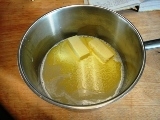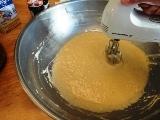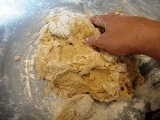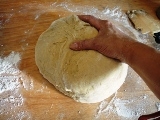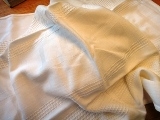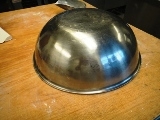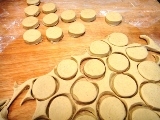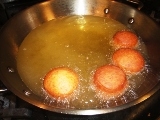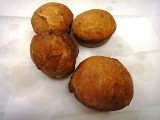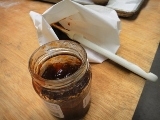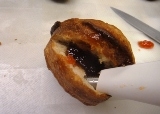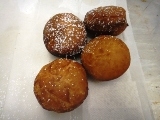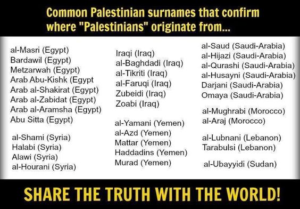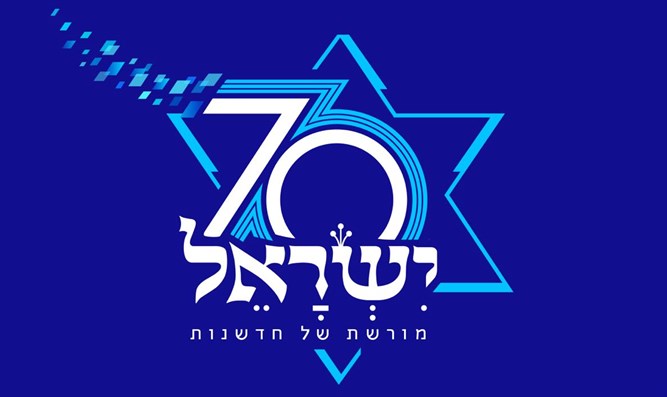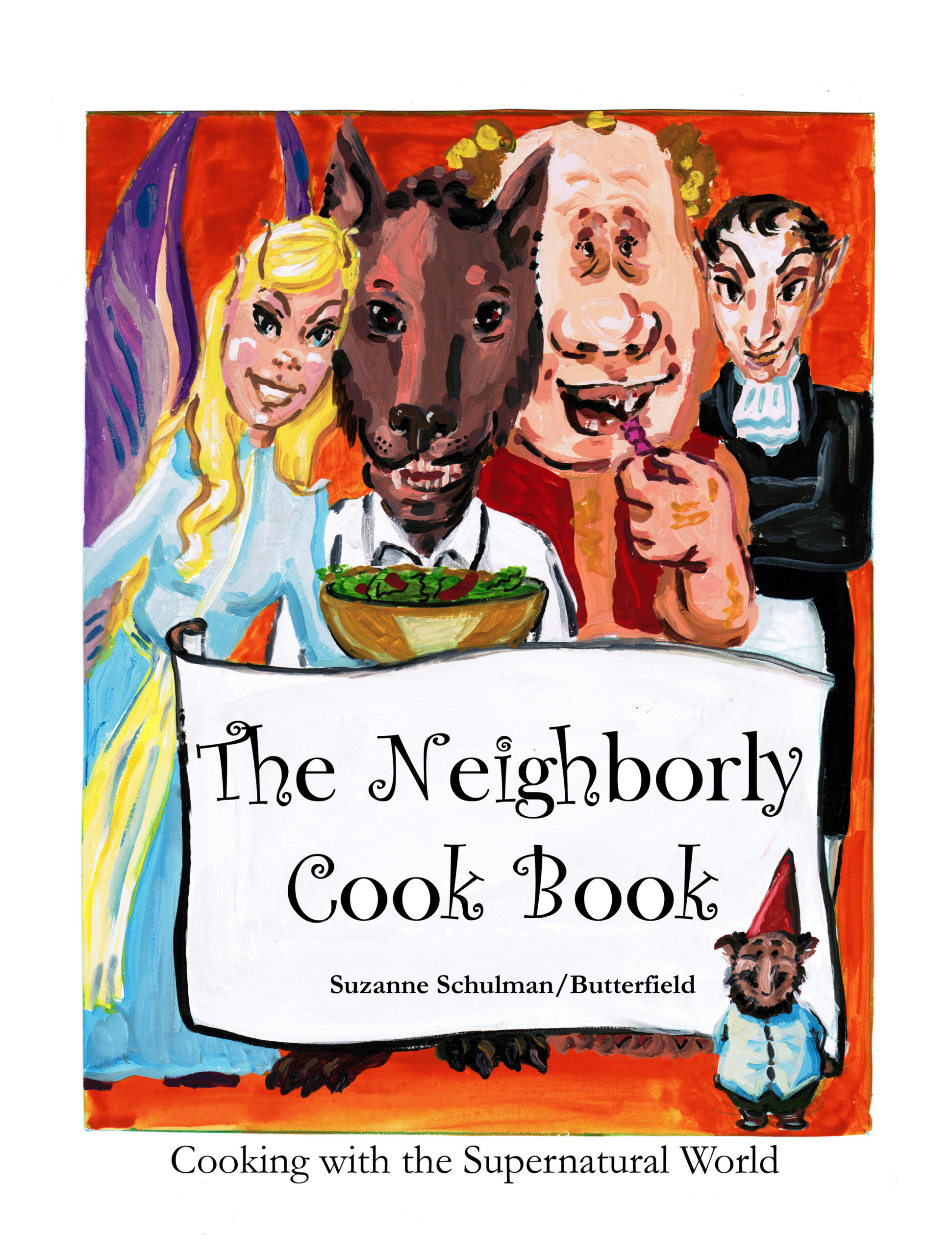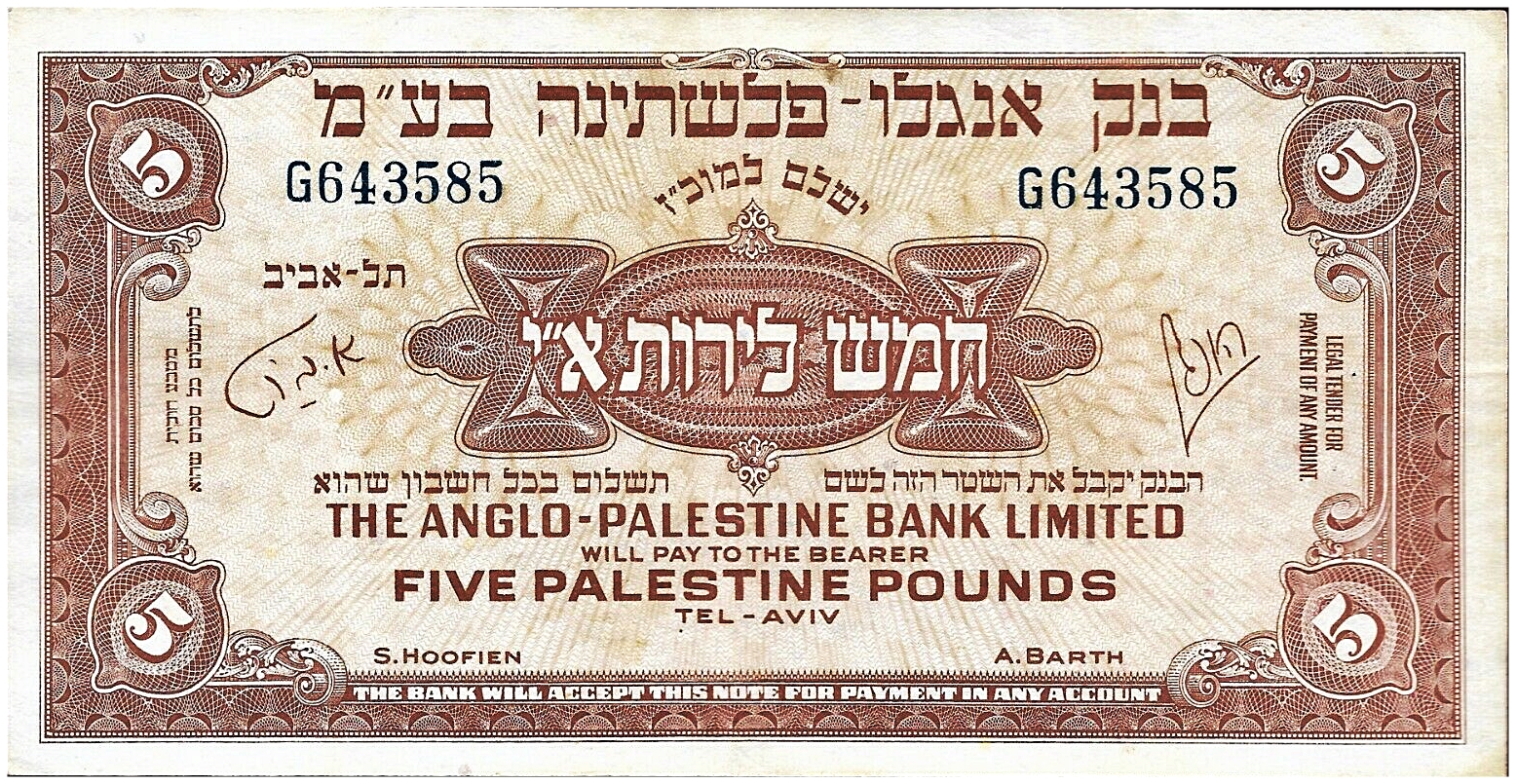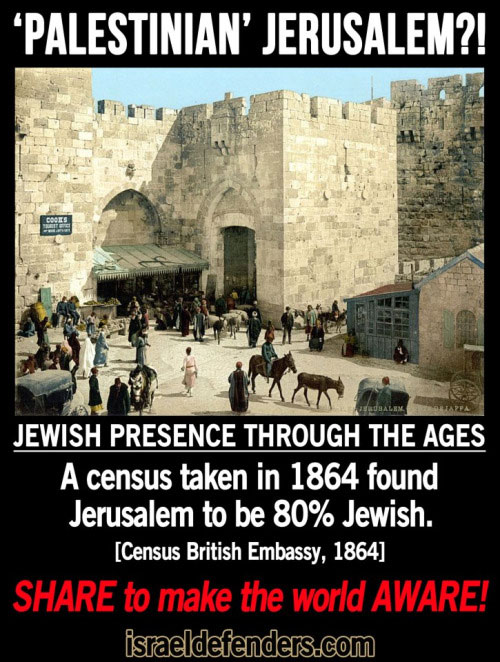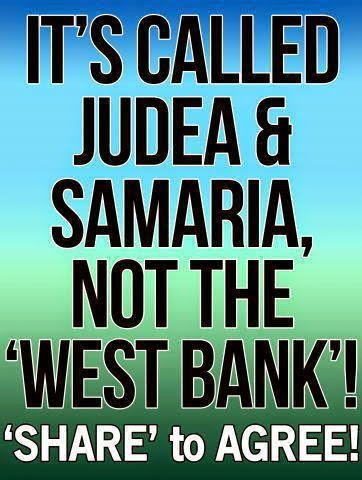Hanukkah Food Recipes |
Torah-Tidbits-1352-chanuka Click to Download the CHANUKA REVIEW for 5780 | How to do Hanukkah |
||||||||||||||||||||||||||||||||||||||||||
|
But the light of our menorahs will continue to shine. Always.
You may recognise the famous picture of below of a Menorah on a window ledge against a backdrop of a building across the road decorated with Nazi flags. Here’s what many people don’t know: The Menorah’s owners, Rachel and Dr. Akiva Posner, saw the writing on the wall and escaped Germany in 1933, arriving in Eretz Yisrael (pre-state Israel) in 1934. Their iconic Menorah survived the war, and was subsequently donated to the Yav Vashem Holocaust museum. Each year, the Posner family make sure to take the Menorah and use it. Last night, the Menorah was lit in the heart of Gaza by one of the descendants of the Posner family. No longer shall Jews be powerless in the face of their tormentors. Wherever there is darkness, we will fight back with light. 🇮🇱 Am Yisrael Chai 🕎 emanumiller-tweet-11December2023-A bit more about the Posners A bit more about the Posners: Rabbi Dr. Akiva Posner, Doctor of Philosophy from Halle-Wittenberg University, served as the last Rabbi of the community of Kiel, Germany before the Holocaust. After Rabbi Posner publicized a protest letter in the local press expressing indignation at the posters that had appeared in the city: “Entrance to Jews Forbidden”, he was summoned by the chairman of the local branch of the Nazi party to participate in a public debate. The event took place under heavy police guard and was reported by the local press. When the tension and violence in the city intensified, the Rabbi responded to the pleas of his community to flee with his wife Rachel and their three children and make their way to Eretz Israel. Before their departure, Rabbi Posner was able to convince many of his congregants to leave as well and indeed most managed to leave for Eretz Israel or the United States. The Posner family left Germany in 1933 and arrived in Eretz Israel in 1934.
|
|||||||||||||||||||||||||||||||||||||||||||
For those that are not living in Israel, you have no idea how wonderful Hanukah is in Jerusalem. The wonderful taste of the “Classic Israeli Sufganiyot” with the “Red Jelly”. Praying at the Kotel. Seeing all the Giant Street Menorahs. |
|||||||||||||||||||||||||||||||||||||||||||
Caroline Glick The American Jewish Community’s Moment to Choose |
|||||||||||||||||||||||||||||||||||||||||||
According to Pew, August 29, 2018 (The Religious Typology – A new way to categorize Americans by religion) 42% of American Jews have completely abandoned their tradition. They have reject Judaism, God, ritual, prayer and religion, 25% called themselves Solidly Secular (What Israeli call Hiloni). |
|||||||||||||||||||||||||||||||||||||||||||
Sophia’s the pomeranian’s Bark Mitzvah w/Lee Day & Rabbi Otis on Nat Geo Wild Spoiled Rotten Pets
|
|||||||||||||||||||||||||||||||||||||||||||
Idgie’s Cat Mitzvah – Hava Nagila
|
|||||||||||||||||||||||||||||||||||||||||||
|
|||||||||||||||||||||||||||||||||||||||||||
Excerpted from The Chanukah Scroll by Hagi Ben Artzi: [When Antiochus sent a demand for the return of captured ‘Greek cities’ in Eretz Yisrael] …Shimon rebuffed these demands…, and responded in resolute and firm terms: “We didn’t take a foreign land and we didn’t exist on the spoils of other nations, but on the lands of our fathers that through the years was illegally seized by our enemies. We, when we had the opportunity, restored our birthright.” – Shimon Maccabee to the Greek Antiochus 2158 year ago. 3626 -136BCEThose Inspiring Maccabees!
1 Tevet 5784 12December2023 http://palmtreeofdeborah.blogspot.com/2023/12/those-inspiring-maccabees.html
Following is a sampling of inspiring speeches made by the Maccabean leaders which aroused the Jewish neshamahs of their followers to greatness in the Name of Hashem. Excerpted from The Chanukah Scroll by Hagi Ben Artzi:
[To the Greek officer who bid him come and sacrifice a pig on the altar to Zeus,]…Matityahu’s response was delivered in a loud and confident voice, and was clearly heard throughout the city square. Matityahu said: “Even if all the nations in the Kingdom of Antiochus hearken to him and abandon their traditions and customs and follow the paths of the Greeks, I, and my sons and my brothers will continue to walk in the ways of our Forefathers, and will not betray the covenant of our God. We dare not leave our Torah and our national tradition! We will not follow and will not hearken to the words of King Antiochus, for the God Who dwells in Heaven is our King.”
…”Jews, we are going out to war! Whoever is zealous for the Torah, whoever is loyal to the covenant with our God, follow me to fight for our faith and our Torah!”
[Even from his deathbed, Matityahu persevered]…”My sons, be zealous for the Torah; give your very souls for the sake of the covenant of your Forefathers. Remember the actions of your fathers, how they gave their lives and brought salvation to their nation. Remember Avraham, Yitzchak and Yaakov; remember Moshe and Pinchas; remember Yehoshua and Calev; remember David and Eliyahu; remember Daniel, Chanayah, Mishael and Azaryah.
Carefully reflect on the previous generations; learn from them that one need not fear an evil man, even if he is strong and threatening. Our fathers trusted in God, and He came to their salvation. You, as well: Believe in God, and become strong with Torah – for only this way will bring you pride. In your war with the enemies of our nation, Yehuda will be your Chief of Staff and commander, and Shimon will be your advisor and father. Gather to you all those who uphold the Torah, and avenge the honor of your people. Give the Gentiles what they deserve, and hold fast on to the Torah’s commandments.”
With these words, Matityahu passed away….
…when Yehuda’s few men saw the great Syrian army marching towards them, great fear fell upon them. They called to their commander Yehuda: “We are few and weak; how will we be able to fight this great camp?” Yehuda then gathered all the men together, and strengthened their spirit with words of faith.
Thus he said to them: “Nothing can prevent God from saving us, whether we are few or many. It is not great numbers of soldiers or heavy weaponry that brings victory in war. It is rather a spirit of valor, one that stems from true faith. We are fighting for our nation and our Torah, whereas they are coming upon us with haughtiness and evil, to destroy us, our wives and our children, and to take our property. The God of our fathers will not abandon us; He will smite them before us.
Arise, my brothers! Go out and fight without fear!”
When Yehuda finished speaking, a spirit of valor overtook his men, and they fell upon their enemies with great force.
[When the war had continued many years, Shimon, the last of the Maccabees] …gathered a large crowd in the courtyard of the Temple in Jerusalem, and encouraged them and raised their spirits. He said to them: “You know that which we have done – I, my brothers, and my father’s house – on behalf of the Torah and the Temple. All my brothers died in the great war, in which they gave their lives for their people; I, alone, remain. Do not fear that their deaths have caused me to be afraid or to seek my own personal safety, for I know that I am no better than my brothers. Just as they did, I will continue to lead you in the way of the Torah and to fight the wars of God.”
[When Antiochus sent a demand for the return of captured ‘Greek cities’ in Eretz Yisrael] …Shimon rebuffed these demands…, and responded in resolute and firm terms: “Not foreign land did we take, and not over property of foreigners did we take control. We have returned to the inheritance of our forefathers, from which we were unjustly banished by our enemies. And now, with the help of our God, we have returned to the inheritance of our fathers.”
AMEN AND AMEN!!
And the Spirit of the Maccabees lives on…
|
|||||||||||||||||||||||||||||||||||||||||||

The “Progressive” Culture?Many in our society proclaim to be “progressive”, “modern”, and in favor of social justice. Yet, they are quick to justify murderers and terrorists! How can such a dichotomy exist within the same person? The Kalever Rebbe explainsKalever Rebbe | Posted on 24December2023 | https://breslev.com/4079445/
There are many institutions, universities and charitable organizations that proclaim themselves to be “progressive” or “modern”. They assert that they vehemently believe in and epitomize a philosophy that unwaveringly supports the spreading of mercy and kindness throughout the world. And, yet, these same “champions of justice and equality” are quick to dismiss and justify the acts of murderers and terrorists. Worse, they defend and try to protect them.
The reason is simple: their desire to promote equality and social justice is self-serving and insincere. Their motivations are selfish. Their efforts are for self-gratification and glorification. For example, they may want to be celebrated by others, satisfying the drive of their egos. They want to receive accolades for their efforts. Or, they want to be respected as humanitarians. All they care about is their own self-promotion. Therefore, when they can gain even more respect and glory by abandoning the values of kindness and generosity, they are more than willing to do so even if it means supporting causes that logically are opposed to these values.
In these moments we see the truth; we see how the secular world values social justice and equal rights. Their morals are on full display.
The Yetzer Harah is powerful. It knows that Yidden are, by nature, generous, kind and merciful. And, it looks to feed and misdirect those emotions by convincing you that the non-Jews are seeking justice, are fighting for equal rights, and are also concerned about the welfare of others. The Yetzer Harah wants you to admire these organizations and universities. He wants the Yidden to get involved in these causes misdirecting their benevolence. Thereby, distracting the Yidden from studying Torah and keeping mitzvot. But, in the end, the truth will be shown. A Bloody HistoryRoughly 200 years ago, there was a period of rapid advances in science and technology. The world thought that these advances would usher in an era of world peace, democracy, and freedom; a time of global understanding and prosperity for all peoples in all places. Murder, conflict, and war would be eradicated permanently.
However, the exact opposite was true. The 20th century saw murder, destruction, societal collapse, and wars on an unparalleled level. And the Germans, who were one of the world’s most civilized and advanced societies, showed that they could behave just like the cruelest animals.
Hitler, may his name be erased, fashioned himself as trying to teach people how to behave properly. Stalin, may his name be erased, claimed that the spread of Communism would make the world a better place. Yet, their seemingly “altruistic” motivations lead to a war that wreaked havoc on the world and the slaughter of millions of people. The world had not yet witnessed such cruelty in all of its history.
During the Holocaust, the Hungarian Jewish community tried to raise funds for the Rescue Committee responsible for trying to save the Yidden in Poland, which had already fallen to the Germans. R’ Aharon of Belz, zt”l, issued the following Halachic ruling: Even though Chazal taught (Gittin 45a) captives are only redeemed for their value, that was when capacity was not so inhuman. However, in the 20th century, the treatment of captives and the mechanisms for mass slaughter have reached a level of cruelty never seen. Now, there is an obligation to redeem captives at all costs. True CompassionThe Yidden are never cruel. True mercy and compassion are naturally ingrained in their hearts. As Chazal taught (Yerushalmi Gitin 42b) that at Har Sinai Hashem provided the tremendous gifts that all of the Jews would always be compassionate.
The Klausenberger Rebbe, zt”l, who witnessed firsthand the brutality of the Germans, shared a beautiful insight. During the Al HaNisim prayer we say during Chanukah, it says, ואתה ברחמיך הרבים עמדת להם בעת צרתם- “You, with Your abundant mercy, stood by them in their time of distress“… When the Yidden rose to wage war against the Greeks, there was a tremendous accusation in the Heavenly Courts against the Yidden, claiming that they were not worthy of a victory. Many of the Jews had assimilated and adopted a Hellenistic lifestyle, forgetting Torah and mitzvot. However, Hashem saw the attribute of compassion that He has instilled in the Jews. And, this “stood by them in their time of distress.” This compassion stood as an undeniable and inescapable differentiator between the Jews and the Greeks.
No matter how distant the Jews had become from the righteous path, regardless of how they tried to live their lives like the Greeks, they were still compassionate people that were the offspring of a compassionate people. A true compassion that was a gift from Hashem. A compassion that ensured that no matter how much they assimilated, real Jews could never behave with even an iota of the Greeks’ cruelty. War According to Torah ValuesIf this is true of any random Jew, even more so, a Yid who studies Torah and learns what a truly refined character means. For, Torah is the source of understanding how to define and express good middot.
Even many benevolent laws of some non-Jewish nations trace their roots back to Torah values. Such laws did not exist prior to the receiving of the Torah.
This mercy even finds its expression in the way Yidden go to war. Typically, war brings rage and violence. The Ramban explains (Devarim 23:10) that this is why there is an added warning for soldiers to “guard yourself from anything evil.” However, as the Or HaChaim (Devarim 13:18) writes, when the Yidden go to war, they have the unique bracha of “and give yourself mercy.”
The Torah is teaching us, that even when you have to go to war, you cannot be cruel. For example, you must first offer a peaceful resolution. And, when you besiege a city, you need to surround it from only three sides, leaving an escape path for all those who want to flee. In Hands of Those Who StudyIn Al HaNisim we praise Hashem for the victory of the war with the Greeks saying, זדים ביד עוסקי תורתך- “and insolent [sinners] into the hands of diligent students of Your Torah”…
What is this adding to the miracle? The “advanced” Greeks were “insolent”. They enjoyed seeing bloodshed. They built stadiums and amphitheaters to watch captives fight for their lives against wild animals. They cheered as captives were slaughtered for sport. They didn’t really value human life. Therefore, they were merciless in war. They intentionally and indiscriminately murdered women and children.
The Chasmona’im, on the other hand, were “diligent students of Your Torah.” They were the Yidden who studied the Torah and were careful to preserve their attribute of compassion. They were cautious during war to only kill those who fought against them.
This was an aspect of the miracle. Even though the war was made more challenging because it was waged by those “engrossed in Torah study” who were more meticulous to exert mercy and compassion. They, nevertheless, were victorious.
Therefore, Al HaNisim continues and says, ולך עשית שם גדול וקדוש בעולמך- “And You made Yourself a great and sanctified name in Your world”… The war was a tremendous Kiddush Hashem in the world. The entire world witnessed the refined character, the attributes that truly differentiated the Jews who were students of the Torah, as distinctly different from the Greeks.
As a result, the Jews no longer admired Greek culture. They didn’t want to study in the Greek universities any more and be a part of Greek society. They recommitted themselves anew to Torah, so that they could acquire true good values that permeate and are reflected in their character, and brings a real good life in This World and in the World to Come. *** The Kalever Rebbe is the seventh Rebbe of the Kaalov Chasidic dynasty, begun by his ancestor who was born to his previously childless parents after receiving a blessing from the Baal Shem Tov zy”a, and later learned under the Maggid of Mezeritch zt”l. The Rebbe has been involved in outreach for more than 30 years and writes weekly emails on understanding current issues through the Torah. Sign up at www.kaalov.org.
|
|||||||||||||||||||||||||||||||||||||||||||

Spiritual MurderersThe Zohar predicted that the darkness of Hellenism would return in the days before Mashiach. How clearly we can see the darkness of assimilation in our day! The Kalever Rebbe explains how to drive out our personal darkness.Kalever Rebbe | Posted on 27December2023 | https://breslev.com/4081192/ Spiritual Threats Are More DangerousYou need to know your enemies. Understand them and never underestimate their drive to accomplish their mission.
In the physical world, for example, if a person is surrounded by murderers, he needs to keep his guard up, even during periods of relative peace and tranquility. For, these murderers have not changed their ways. They are just waiting for the right time to launch their attack.
This is even more critical in the realm of spirituality. A person must recognize and protect himself vigilantly from people who try to sway him away from Torah and mitzvot. These are “spiritual murderers”, and they are an even greater threat than the physical ones.
As Chazal taught (Sifri, Parshat Tzeitzei 42), that the Ammonites and Moabites who tried to make Bnei Yisroel sin, were worse than the people of Edom who waged a war against them. Our spiritual enemies are a greater threat and can do more damage than our physical enemies. When someone falls in battle, etc., he can still enjoy the eternal experience of the World to Come. However, if someone sins, his fate is worse than death, as he has destroyed the everlasting pleasure of the world to come for a temporary and empty experience in this world.
Napoleon was on a conquest to conquer the Russian nation and he found himself in a difficult and brutal war with the Russians who would not give up so easily. During this war, the Baal HaTanya, zt”l, said that the yidden should pray and do everything they can to help ensure Napoleon’s defeat. For, as the Rebbe explained, even though Czar Nicholas and the Russian presented a very real threat, it was merely physical. Napoleon, on the other hand, would try to destroy the Jews’ spirituality, which is far worse.
When a yid cannot recognize the magnitude of the damage a sin does to a person and this world, it is a sign that he has already fallen into the yetzer harah’s trap. He is held captive by the physical desires of this world, by the impurity of his sins, and his eyes been blinded from seeing the truth.
R’ Simcha Bunim of Pshischa said: “You need to imagine that the Yetzer Harah is like an executioner standing over you with his axe held high just waiting to decapitate you. If that imagery is hard for you, if you cannot see it, then your head has already been chopped off!” The Greek HolocaustDuring the time of the Greek occupation, assimilation was rampant. The impure and depraved Greek culture has seeped into Jewish life. The Greeks, more than anything else, wanted to eliminate the defining character traits that defined the Jews spiritually. They brought in their greatest philosophers and professors from Athens to help influence the Jews to abandon their connection to Torah and mitzvot on a spiritual level.
The Greeks had one motivation: the complete destruction of the Jews’ spiritual connection to Hashem. This was a spiritual Holocaust.
The Tanna Nitai, the Arbelite, who lived during the time of the Greeks, warned (Pirkei Avot 1:7): “Distance yourself from a bad neighbor, do not cleave to a wicked person, and do not abandon belief in retribution”.
His intention was clear: do not befriend the Greeks and those who would try to harm you spiritually through their impure influences. Even when it seems benign and harmless, know that in the end, there will inevitably be retribution.
The Greeks were a propaganda machine. They designed marketing campaigns to proliferate their culture and ideas, all aimed at driving evil indulgence and supporting the pursuit of physical pleasure. And it worked. The yidden became unable to recognize the destruction and damage being done to them spiritually. As Chazal taught (Bereishit Rabba 2:4), ” ‘Darkness’ refers to the Greek exile who darkened the eyes of Israel.”
The Zohar (Volume III 279) teaches that this darkness of the Greeks would return to the world in the days before Mashiach’s arrival.
We can see that that darkness has indeed returned. The DarknessThe Greeks invented a culture that was defined by promiscuity, living freely without consequence, and indulgence in every forbidden pleasure. To achieve this, they tried to eradicate the three things that would prevent someone from sinking into such a depraved lifestyle:
To eradicate these three ideas from the Jewish culture, they attempted to erase three mitzvot: Shabbat, Rosh Chodesh, and Brit Milah. ShabbatShabbat declares that Hashem created the world in six days and rested on the seventh. Shabbat is an expression of one’s belief that Hashem created the world.
The Greeks did not prescribe to this idea. Instead, they conjured up all kinds of explanations for the world’s creation.
They ignored the fact that despite the efforts of their most brilliant minds, however, they were never able to understand and explain the very first cause, the action that led to every other reaction. They could never explain how such a beautiful and complex world came into existence by chance. Rosh ChodeshThe process of sanctifying the months is dependent on the Jewish judicial system. It is an expression of rabbinic authority.
The Greeks wanted people to think that they could act any way they wanted. They disregarded the authority and guidance of the rabbinate. Greek culture was completely dismissive of authority figures. They believed in a distorted democratization of the judicial process. There was even a period when they instituted a system of governance in Athens, where every civic question was brought before all the people. As a result, the masses who were mostly unaware of the complexities of the case and who lacked the competency would be making these decisions.
They ignored the importance of expertise. Therefore, they wanted the Jews to ignore and neglect the value of rabbinic guidance. The Greeks wanted the Jews to devalue the extensive knowledge of the leaders and rabbis, the “doctors for the soul”. Brit MilaThe Brit Milah weakens physical desires and lust.
The Greeks felt that no desire should be curtailed and suppressed. They were confident that everyone could indulge in their temptations responsibly without harming others. They also argued that these were just desires that a person was born with, and they could not be controlled or changed. A person could not master these desires. This was simply part of being human. Therefore, they encouraged people to pursue these pleasures, but not only in their homes. They wanted to be unashamed. They tried to make people fill the obscenest lusts with arrogance and pride – to do them publicly and without shame.
They denied that Hashem created each person with the power of free will to choose not to indulge in these illicit behaviors. The Greeks wanted people to forget that they can overpower these natural tendencies, to choose pure over impurity, good over evil. Today’s GreeksThis behavior and depraved culture would eventually be the Greeks’ undoing. It would lead to the destruction of their empire. And, over time, the world would reset and never again live as extremely as the Greeks.
However, their darkness has returned. We can see those same ideas and ideals trickling into today’s culture. There are countless organizations that try to uproot religious beliefs. They mislead rabbis and want the Jews to assimilate into a culture that is defined by spiritual starvation.
This is what Chazal taught (Sotah 49b) – that before Mashiach arrives, three things will happen: Firstly, governments will be overtaken by heretics. Secondly, the culture will be brazen. And finally, promiscuity will run rampant. Today’s HasmoneansAs we once again face the darkness of the Greeks, we need to learn the lessons taught to us by the Hasmoneans. They did not allow themselves to be influenced by the Greeks. They stood firm and proud as they distanced themselves from the Greek culture.
The Hasmoneans repaired the holes that the Greeks made in the latticed wall that was near the Beis HaMikdash. This wall stood as a reminder to everyone that the non-Jews were not allowed to enter beyond that point. The Greeks were trying to infiltrate the Jewish society; to corrupt them with friendship and to inspire them with new and impure ideas. The Hasmoneans rectified these “holes” in the fabric of the Jewish society.
Therefore, the holiday was called “Chanukah”, to remember the consecration of the Beis HaMikdash which was restored, as a reminder and differentiator between the Jewish and nations of the world.
This can also explain why the Greeks decreed that the Jews should write the words “We have no part in the God of Israel” precisely on the bull’s horn. We see that Yosef is represented by an ox (Devarim 33:17). Yosef was challenged beyond measure by Potiphar’s wife. She tried to convince Yosef to sin. Yet, Yosef withstood the temptation, literally fleeing from it. Every Jew must have this trait of Yosef to flee from the influences that are trying to pull him away from Torah and mitzvot. This Greek decree was an effort to separate the Jews from this lesson of Yosef.
Therefore, on Chanukah it is appropriate for everyone to strengthen themselves in this area. They need to distance themselves from evil influences, from associations with people who behave improperly and try to sway them away from Torah and mitzvot, and to make fences and caveats that will protect their soul from the spiritual murderers that are lurking throughout society, and most brazenly on the internet, and especially on social media.
In this merit, you will have an enlightened and blessed life. *** The Kalever Rebbe is the seventh Rebbe of the Kaalov Chasidic dynasty, begun by his ancestor who was born to his previously childless parents after receiving a blessing from the Baal Shem Tov zy”a, and later learned under the Maggid of Mezeritch zt”l. The Rebbe has been involved in outreach for more than 30 years and writes weekly emails on understanding current issues through the Torah. Sign up at www.kaalov.org.
|
|||||||||||||||||||||||||||||||||||||||||||

The war against Amalek13December2022 https://rivkalevy.com/the-war-against-amalek/ Here’s part of a shiur about the war against Amalek, from the English Shuvu Banim group.Reprinted with permission. ==== Likkutei Halachot – Orach Chayyim – Halachot Shabbat 5Rabbi Nachman states that the war against Amalek is in every generation.
This is a spiritual war and it is happening now just as much as it has been happening in the past.
The main power we have to fight against Amalek and to destroy his name and his memory from the world is through the aspect of Shabbat; the Tzaddik. This war is against the name of Hashem and the True Tzaddik of the generation. ==== The True Tzaddik is the beauty, the wonder, and the true grace of the entire world.
He is from the aspect of the river coming out of Gan Eden. The Tzaddik is the Foundation (Yesod) of the world. And all the other rivers come out from him. All of the life force in the world comes from this Tzaddik.
Whoever is unified with the true name of this Tzaddik merits to do Teshuva. ==== When the Tzaddik is revealed in the whole world, and the world comes close to him; the whole world will be rectified.When they truly come close to him. He has the power to rectify the entire world, if they [the other side] wouldn’t be hiding him.
The goal of Amalek in this war is to hide and conceal the True Tzaddik; this is the aspect of the war of Amalek. ==== The whole war is against this True Tzaddik.Just this one person – that is all that Amalek cares about. They know that if they only fight against this one True Tzaddik, that all the spiritual sustenance in the world will be threatened.
Amalek is the Rosh, i.e. the head/leader of the other side (the Sitra Achra). The Tzaddik is the Rosh/Head of the world/Chief/Leader of the opposing force for good which is Hashem. Rosh Bayit…Head of the House.
Amalek is only interested in fighting against, and opposing the True Tzaddik of the generation. The True Tzaddik is the Head of the House and runs the world. ==== Amalek knows that the power of this Tzaddik is so strong, and that he cannot possibly win this war.There is no chance of winning, he has no power against the Tzaddik. In every generation the Tzaddik has destroyed him.
Amalek know that the True Tzaddik destroys all the bad character traits and lusts (Ta’avot). The True Tzaddik is able to remove all the poison (Zuhama) of the snake (Nachash), which is the cause of all evil and pain in the world and of the exile.
The true Tzaddik completely cancels in himself all the poison of the Nachash, and nullifies it (bitul).
The Tzaddik sacrifices his soul every day for Hashem, and takes upon himself suffering worse than death itself, he does all this for the Jewish people. ==== Amalek causes opposition and controversy around the Tzaddik, in order to distance the Jewish people from the Tzaddik so that they can not be saved and get back to Hashem.The aim of this evil Klipah, called Haman-Amalek with all of his very sly trickery, is only to conceal the True Tzaddik. This Klipa of Amalek, is very cunning, and knows that not all people will necessarily listen, if it says the Tzaddik is a bad person (a rasha).
So he encourages the Jewish people to come close to other Tzaddikim to distract them from the True Tzaddik, as long as they do not come close to the One True Tzaddik. This is the working of the snake.
This distracts them from the True Tzaddik who has the power to bring the Redemption. ==== Amalek promotes alternative Tzaddikim and Philosophers, and Epicorsus, as alternatives on the other side; making them appealing and attractive.In big, fancy synagogues, with comfortable cushioned seats, Amalek promotes these leaders who are heretics to mislead and confuse the world and uproot them from their source.
Even if the alternative Tzaddikim are great, they may still have a speck of impurity (evil); and they cannot take Israel out of the evil (Ra) to the good (Tov). This is because they have not completely perfected their own character traits (midot).
These Tzaddikim do not have the power to rectify the world, i.e. take it out of the (Ra) and into good (Tov). ==== The war of the Klipa of Amalek is to hide the name of the true leader and Tzaddik of the generation, who has no trace of evil impurity; the only one who can bring all of Israel to Hashem.Only the True Tzaddik, the “One in the Generation” can bring all of Israel to Hashem; to rectify the world.
Amalek is very smart and promotes and elevates alternative Tzaddikim in the world and on YouTube etc; great Torah scholars; they are pure and beautiful, but they are being promoted by the side of Tumah (impurity). ==== Amalek can take a genuine Tzaddik and put in his heart and motivate him to go against the True Tzaddik of the world.All Torah scholars would then listen to this Tzaddik.
He promotes other Tzaddikim, he will go that far and tricks people by promoting and raising up these other Tzaddkim. All the publicity and greatness of these tzaddikim are really coming from the side of impurity.
Amalek’s motive is to distance the Jewish people from the True Tzaddik who can rectify all of the souls of Israel, and all the worlds depend only on this one True Tzaddik. Amalek is happy to get people to follow any other Tzaddik, except for the One that counts. ==== This True Tzaddik is the Rosh, the leader and the other Tzaddikim are the aspect of the tail.It is better to be the tail of the true Tzaddik rather than the head of somewhere else. There will be much confusion in these end days. Amalek takes tails and turns them into heads to cause confusion.
Rav Succot said in this last Thursday’s chaburah that the greatest gift is the gift of failure, because then you realize that you can do nothing on your own and you need the Tzaddik. And the greatest punishment is to feel you are a great leader; that you are great by yourself and you do not need the True Tzaddik.
The truth is that even if you are attached to the True Tzaddik by just the aspect of a tail, then you ARE attached and you will be made pure. When people think they are great they oppose the True Tzaddik.
The Gemara Says: Be a tail to Lions and do not be the head of the fox. ==== The war against Amalek is in every generation, and the controversy is against the Tzaddik who has the soul of Mashiach.In every generation the Geulah is possible through the soul of Mashiach who is only in one Tzaddik.
Sometimes we get impatient with our lacking and may ask a different Tzaddik for a blessing (Beracha) or advice (Atzah).
The alternative Tzaddik may even perform miracles – Be careful, as that may be Amalek! That miracle may come from Amalek who is trying to entice you to forget about the True Tzaddik.
Even if you feel that you are not receiving your desired rectification when staying with the True Tzaddik, that is only for your benefit. And if you stick with it, eventually you will receive your ultimate rectification. Everything will be fixed.==== |
|||||||||||||||||||||||||||||||||||||||||||

Hanukkah: A Celebration of Civil War?28 Kislev 5784 11December2023 http://palmtreeofdeborah.blogspot.com/2020/12/hanukkah-celebration-of-civil-war.html
And this battle is still going on today. The Torah-true Jews who cherish their uniqueness and guard against foreign intrusion are an extreme minority. It is also very noteworthy that every trouble we have ever had with foreign rulers was due to reshaim who wanted to assimilate.
|
|||||||||||||||||||||||||||||||||||||||||||
If you want to really learn what it is to be Jewish Click Here or Here. Nefesh B’Nefesh: Live the Dream US & CAN 1-866-4-ALIYAH | UK 020-8150-6690 or 0800-085-2105 | Israel 02-659-5800 https://www.nbn.org.il/ info@nbn.org.il Nefesh B’Nefesh – Bringing Jews Home |
|||||||||||||||||||||||||||||||||||||||||||

Zot ChanukahZot Chanukah – the 8th Chanukah light. When compared to the “ohr ein sof” that burns in the Chanukah candles, the so-called “light” of enlightenment and modern philosophy is utter darkness…Pinney Wolman | Posted on 13December2023 | https://breslev.com/457840/
Zot Chanukah is a funny day. It gets me every year. Besides the few hours that the Chanukah menorah actually burns with the flames of all 8 lit candles, for most of the day – the holiest, strongest day of Chanukah – it sits in silence. It’s still Chanukah, but where is the light? I struggle to remember that it is still Chanukah, even with no presents to look forward to, no candle lighting tonight, no more doughnuts, more dreidel, and no more “Chanukah gelt”.
I was thinking about this today and suddenly it hit me – the light that burns in the Chanukah candles is the ohr ein sof – the unending light of Creation. Using it you can see from one end of the world to the other. The day of Zot Chanukah, the lights burn brightest because it is the connection between the first 7 days when they burn physically and the rest of the year, when they burn only spiritually. And how can we spread this light to the rest of the year?
LIGHT OF TORAH WISDOMThe Torah is also the ohr ein sof – using the Torah it is possible to see all of Creation, to know everything, if only one knows how to mine the Torah for that information. Rabbi Lazer Brody told a story about how the Chazon Ish spoke with a neurosurgeon who came to him not knowing how to approach a patient’s life-threatening brain tumor without killing the patient. The Chazon Ish, using information from tractate Chulin in the Gomorrah, suggested a surgical approach that was much safer. Many such stories abound in fact. Rabbi Brody loves reminding people that you can learn all of geometry through the laws of Sukkah in the Gemara. It is possible to know everything through the Torah.
This comes with an important aside. We must recognize the principle importance of the Torah!!! I hear from people all the time, and even used to believe myself, that the Torah is “added to by the wisdom of the world around us” and the like. Why, we should be worldly Jews, right? NO!!! That is what Chanukah is all about. It gets me every year that as a child in public school I learned all about Greek culture and its likes. The “beautiful democratic” society we were taught to love and admire – THAT society is exactly the society that is against the Jews and Judaism. That is the society whom we fought in the Chanukah story, and whose victory over that same society we celebrate every year. That is the society that tried to make us deny the Torah and forbid us from keeping some of its most important commandments, such as Rosh Chodesh, Shabbat, and brit milah (circumcision).
And that’s what Chanukah comes to remind us about, year after year. Sure the wisdom of the non-Jews, Greek philosophy, and everything else, looks great. It’s all diamonds – looks nice and shiny but on the inside it is empty – really it is DARKNESS. Compared to the light of the Torah, which is the Truth of Hashem and which contains the ohr ein sof, the wisdom of the non-Jews is utter darkness and confusion. Their wisdom is borne out of their own lusts, their desire to fulfill them, and their philosophies that enable them to do that. Consequently, every single nation refused to accept the Torah – each nation wanted their lust and desire, their sin, and didn’t want to keep a Torah that told them to change. It is also the primary reason why accepting the Torah upon ourselves is so difficult according to Rebbe Nachman as he explains in Likutei Moharan. The Torah tells us to curb some lust or desire that we have (for instance, our innate desire to please and act like the non-Jews around us) and we don’t want to listen, we don’t want to be challenged to change, we don’t want to give up that forbidden thing. So we deny the Torah, or we change the Torah (really they are the same thing) in order to keep our lusts and desires.
LIGHT OF THE TZADDIKEven more, Chanukah is all about belief in the tzaddik. We aren’t celebrating the Jews who became Hellenists and acted like Greeks. We celebrate “Matityahu Kohen Gadol and his sons” – the tzaddik of the generation – who recognized that for Judaism to survive, he had to stand against Greek culture and its subversion. And Hashem helped him. Similarly, our survival at Purim was in the merit of Mordechai, the tzaddik of that generation. So BOTH of the holidays of “exile” are celebrations of the Tzaddik of the generation, and the Jews who followed him.
OUR LIGHT TODAYSo what about us in this generation?! Can we survive without following the tzaddik? To celebrate Chanukah and Purim IS to recognize that the only way to make it through exile is to follow everything they say, even if they say fight the mighty Greek empire! Fight the mighty Persian empire! Don’t go to the feast of the non-Jews, even if it’s 100% glatt kosher! Whose side do we want to be on today? Whose side do you think Jews of the future are going to celebrate – those who followed the tzaddik and had true emunat tzaddikim (belief in the true tzaddikim), or those who didn’t?!
Don’t worry that it’s dark outside now and Chanukah is over. We still have the light of the Torah, and the light of the true Tzaddikim, lighting up the way for us – IF ONLY WE CONNECT TO THEM, BELIEVE IN THEM, AND FOLLOW THEM NO MATTER WHAT – even and especially when that means leaving behind the ways, dress, jobs, lands, and opinions of the non-Jews.
|
|||||||||||||||||||||||||||||||||||||||||||

Unconditional ResistanceThe words of the true tzaddikim are relevant and timely always, as we see in the Lubavitcher Rebbe’s amazing Chanuka message from over 50 years ago…By: the Lubavitcher Rebbe Update date: 2 December 2018 https://breslev.com/389373/ Chanuka, 5716 (1955) Chanuka recalls the rededication of the Holy Temple which had been defiled by the heathen rulers of the Holy Land and their assimilationist collaborators.
The miracle of Chanuka was brought about by the self-sacrificing resistance begun by the Hasmoneans despite the overwhelming odds against them.
In applying the lessons of Chanuka to today, insofar as the daily life of the Jewish individual and community is concerned — and this, after all, is the purpose of all of our festivals — several aspects are especially noteworthy.
Firstly, that even so holy a place as the Holy Temple can be defiled under certain circumstances, though outwardly remaining intact.
Secondly, that in such a case, as the events of Chanuka clearly emphasize, cleansing and rededication of the Sanctuary can only be attained through mesirat nefesh, that is, a self-sacrificing determination to resist the forces of darkness without entering into any calculations whatsoever as to what the odds are in the struggle.
For, since there can be no compromise with an enemy bent on defiling that which is most sacred in Jewish life, the only Jewish answer can be “unconditional resistance,” leaving the final outcome to the Divine Will.
Where such an attitude of mesirat nefesh exists, the outcome cannot really be in doubt, for such is the perennial lesson of Jewish history.
Furthermore, as is always the case in Jewish life, material welfare is likened to the spiritual. Thus in the case of Chanuka, too, although the persecution started in those days with an effort “to make them forget your Torah and transgress Your statutes,” it was followed by a policy of robbing the Jews also of their material wealth, and of their children.
However, when under the leadership of the handful of Hasmoneans the Jews resisted assimilation with steadfast faith, the Almighty helped them to completely vanquish the enemy, thus saving not only their souls, but also their wealth and their children.
Nowadays, as often before, Jews who want to remain loyal to the heritage of their fathers find themselves outnumbered and endangered by the forces of darkness that threaten to engulf the world, and the Jewish world in particular.
The Jewish home, yeshiva and synagogue are the Sanctuaries of G-d which are not immune from defilement, G-d forbid; it still requires the same kind of Hasmonean determination to preserve their purity and holiness.
But although the odds may seem overwhelming, the reward is more than commensurate, for with G-d’s help, the outcome is certain to be miraculous and the victory complete, spiritually as well as materially, as in those days at this season. * * * |
|||||||||||||||||||||||||||||||||||||||||||

Rabbi Lazer’s Chanukah Message: Mattatyahu’s Courage07 December 2018 https://www.lazerbrody.net/lazer_beams/2018/12/mattatyahus-courage.html
Mattatyahu Cohen HaGadol, whom we remember every time we say the “Al HaNissim” prayer during Chanuka, is buried in a cave in a forest, about a kilometer north of Highway 443 near Mevo Modiin, which Hashem enabled me to visit yesterday.
Mattatyahu and his sons fought a double war – not only against the Syrian Greeks, but against the 95% of the Jewish people who had become assimilated Hellenists. But because of his steadfast, unwavering and uncompromising commitment to Hashem, to his emuna, to the Torah and to his homeland, he was able to overcome all obstacles and instill the fire of emuna and total dedication in the hearts of his brave sons and daughter.
Where did he get his strength and courage from? Nothing gives a person strength like clarification of the truth. A person who knows the truth and who lives according to the truth is as fierce as a lion. He is not willing to live a lie; so, if you take the truth away from him, he’ll no longer regard his life as worth living. That’s why our ancestors in every generation all the way back to our forefather Abraham were willing to sacrifice their last breath and heartbeat for our faith in Hashem and our Torah.
Mattatyahu and his sons Yehuda, Elazar, Shimon, Yochanan and Yonatan knew the truth. For a servant of Hashem, life is worthless without Torah, emuna, and holiness. The Hellenists fooled themselves while trying to dilute the truth and appease the Syrian Greeks, but the latter wanted to destroy it altogether and to substitute it with a life of pursuing bodily amenities.
Did Hashem send our souls down to this lowly earth just for another piece of steak, another fling with the opposite sex, or another NBA game? Those who waste their lives in the pursuit of material appetites are neither happy nor fulfilled. What’s worse, they haven’t devoted a single minute to clarifying the truth.
21″ biceps won’t give you courage. Truth and emuna will. If the Prime Minister of Israel would clarify the truth, no foreign pressure in the world would sway him a single millimeter. If a teenager would clarify the truth, then he’d say no to the stupid things that his peers are doing. If a woman knew the truth, she wouldn’t care if her neighbors called her “nebby” or “yachna” for dressing the way Hashem wants her to dress. If a man would be honest with himself, he’d realize how contemptible it would be to sacrifice one’s entire family for a few moments of illicit thrills.
Mattatyahu and his sons were masters at truth clarification. They weren’t willing to live for two minutes without the truth. That’s where they derived the courage to fight a virtually impossible war. And that’s why they won.
While we’re basking in the holy light of the Chanuka candles, let’s ponder the real meaning of this beautiful festival that commemorates the miracle of the few prevailing over many, the pure prevailing over the impure, and the light prevailing over darkness. Let’s remember the dedication and commitment of Mattatyahu and his sons. Let’s strengthen ourselves and carry their torch of Torah and truth, no matter what the odds. We can do it. All we need is emuna. Blessings for a wonderful Shabbat Chanuka!
|
|||||||||||||||||||||||||||||||||||||||||||

Classic Kahane: “Down With Chanukah”
27 Kislev 5784 10December2023 http://palmtreeofdeborah.blogspot.com/2023/12/classic-kahane-down-with-chanukah.html DOWN WITH CHANUKAHby Rabbi Meir Kahane
If I were a Reform rabbi; if I were a leader of the Establishment whose money and prestige have succeeded in capturing for him the leadership and voice of American Jewry; if I were one of the members of the Israeli Government’s ruling group; if I were an enlightened sophisticated, modern Jewish intellectual, I would climb the barricades and join in battle against the most dangerous of all Jewish holidays – Chanukah.
It is a measure of the total ignorance of the world Jewish community that there is no holiday that is more universally celebrated than the “Feast of Lights”, and it is an equal measure of the intellectual dishonesty and of Jewish leadership that it plays along with the lie. For if ever there was a holiday that stands for everything that the mass of world Jewry and their leadership has rejected – it is this one. If one would find an event that is truly rooted in everything that Jews of our times and their leaders have rejected and, indeed, attacked – it is this one. If there is any holiday that is more “unJewish” in the sense of our modern beliefs and practices – I do not know of it.
The Chanukah that has erupted unto the world Jewish scene in all its childishness, asininity, shallowness, ignorance and fraud – is not the Chanukah of reality. The Chanukah that came into vogue because of Jewish parents – in their vapidness – needed something to counteract Christmas; that exploded in a show of “we-can-have-lights-just-as-our-goyish-neighbors” and in an effort to reward our spoiled children with eight gifts instead of the poor Christian one; the Chanukah that the Temple, under its captive rabbi, turned into a school pageant so that the beaming parents might think that the Religious School is really successful instead of the tragic joke and waste that it really is; the Chanukah that speaks of Jewish Patrick Henrys giving-me-liberty-or death and the pictures of Maccabees as great liberal saviors who fought so that the kibbutzim might continue to be free to preach their Marx and eat their ham, that the split-level dwellers of suburbia might be allowed to violate their Sabbath in perfect freedom and the Reform and Conservative Temples continue the fight for civil rights for Blacks, Puerto Ricans and Jane Fonda, is not remotely connected with reality.
This is NOT the Chanukah of our ancestors, of the generations of Jews of Eastern Europe and Yemen and Morocco and the crusades and Spain and Babylon. It is surely not the Chanukah for which the Maccabees themselves died. Truly, could those whom we honor so munificently, return and see what Chanukah has become, they might very well begin a second Maccabean revolt. For the life that we Jews lead today was the very cause, the REAL reason for the revolt of the Jews “in those days in our times.”
What happened in that era more than 2000 years ago? What led a handful of Jews to rise up in violence against the enemy? And precisely who WAS the enemy? What were they fighting FOR and who were they fighting AGAINST?
For years, the people of Judea had been the vassals of Greece. True independence as a state had been unknown for all those decades and, yet, the Jews did not rise up in revolt. It was only when the Greek policy shifted from mere political control to one that attempted to suppress the Jewish religion that the revolt erupted in all its bloodiness. It was not mere liberty that led to the Maccabean uprising that we so passionately applaud. What we are really cheering is a brave group of Jews who fought and plunged Judea into a bloodbath for the right to observe the Sabbath, to follow the laws of kashruth, to obey the laws of the Torah. IN A WORD EVERYTHING ABOUT CHANUKAH THAT WE COMMEMORATE AND TEACH OUR CHILDREN TO COMMEMORATE ARE THINGS WE CONSIDER TO BE OUTMODED, MEDIEVAL AND CHILDISH!
At best, then, those who fought and died for Chanukah were naïve and obscurantist. Had we lived in those days we would certainly not have done what they did for everyone knows that the laws of the Torah are not really Divine but only the products of evolution and men (do not the Reform, Reconstructionist and large parts of the Conservative movements write this daily?) Surely we would not have fought for that which we violate every day of our lives! No, at best Chanukah emerges as a needless holiday if not a foolish one. Poor Hannah and her seven children; poor Mattathias and Judah; poor well meaning chaps all but hopelessly backward and utterly unnecessary sacrifices.
But there is more. Not only is Chanukah really a foolish and unnecessary holiday, it is also one that is dangerously fanatical and illiberal. The first act of rebellion, the first enemy who fell at the hands of the brave Jewish heroes whom our delightful children portray so cleverly in their Sunday and religious school pageants, was NOT a Greek. He was a Jew.
When the enemy sent its troops into the town of Modiin to set up an idol and demand its worship, it was a Jew who decided to exercise his freedom of pagan worship and who approached the altar to worship Zeus (after all, what business was it of anyone what this fellow worshipped?) And it was this Jew, this apostate, this religious traitor who was struck down by the brave, glorious, courageous (are these not the words all our Sunday schools use to describe him?) Mattathias, as he shouted: “Whoever is for G-d, follow me!”
What have we here? What kind of religious intolerance and bigotry? What kind of a man is this for the anti-religious of Hashomer Hatzair, the graceful temples of suburbia, the sophisticated intellectuals, the liberal open-minded Jews and all the drones who have wearied us unto death with the concept of Judaism as a humanistic, open-minded, undogmatic, liberal, universalistic (if not Marxist) religion, to honor? What kind of nationalism is this for David-Ben-Gurion (he who rejects the Galut and speaks of the proud, free Jew of ancient Judea and Israel)?
And to crush us even more (we who know that Judaism is a faith of peace which deplores violence), what kind of Jews were these who reacted to oppression with FORCE? Surely we who so properly have deplored Jewish violence as fascistic, immoral and (above all!) UN-JEWISH, stand in horror as we contemplate Jews who declined to picket the Syrian Greeks to death and who rejected quiet diplomacy for the sword, spear and arrow (had there been bombs in those days, who can tell what they might have done?) and “descended to the level of evil,” thus rejecting the ethical and moral concepts of Judaism.
Is this the kind of a holiday we wish to propagate? Are these the kinds of men we want our moral and humanistic children to honor? Is this the kind of Judaism that we wish to observe and pass on to our children?
Where shall we find the man of courage the one voice, in the wilderness to cry out against Chanukah and the Judaism that it represents-the Judaism of our grandparents and ancestors? Where shall we find the man of honesty and integrity to attack the Judaism of Medievalism and outdated foolishness; the Judaism of bigotry that strikes down Jews who refuse to observe the law; the Judaism of violence that calls for Jewish force and might against the enemy? When shall we find the courage to proudly eat our Chinese food and violate our Sabbaths and reject all the separateness, nationalism and religious maximalism that Chanukah so ignobly represents? …Down with Chanukah! It is a regressive holiday that merely symbolizes the Judaism that always was; the Judaism that was handed down to us from Sinai; the Judaism that made our ancestors ready to give their lives for the L-rd; the Judaism that young people instinctively know is true and great and real. Such Judaism is dangerous for us and our leaders. We must do all in our power to bury it.
~ HAPPY HANUKKAH ~
|
|||||||||||||||||||||||||||||||||||||||||||
How to celebrate and understand Hanukkah: Chabad, BreslovA Healthy HanukkahTradition is not supposed to harm good health. Isn’t there an alternative to deep-fried white-flour donuts doused in powdered white sugar and filled with sugary jam? By: Rabbi Lazer Brody Update date: 26November 2018, https://breslev.com/486029/
Some people roll their eyes in delight as they bite into their bakery or store-bought Hanukkah-delicacy deep-fried donut. Sure, it’s a tradition to eat foods during the eight days of Hanukkah that contain or have been prepared with oil. Today, the two most popular ones are potato pancakes (latkes), fried in lots of oil, and those notorious deep-fried jelly-filled donuts (sufganiyot), smothered in powdered sugar.
Tradition is not supposed to harm good health, much less make a person sick. The Rambam, whose health and nutritional advice are uncontested to this day, outlasting all the diet and nutritional fads that come and go, would undoubtedly shudder at the thought of a deep-fried donut doused in powdered white sugar and filled with sugary jam. Why?
White sugar is poison for the body. So is white flour. Both are empty carbohydrates with no nutritional value other than calories that overwork the pancreas and liver by increasing blood sugar and demanding more insulin from the body. These two culprits are not only the key to the obesity epidemic but to Type 2 diabetes as well.
Traditionally, at many synagogues, the donuts are served with Cola and sugary liqueurs. What a nightmare… Do you know what’s in that jelly-filled donut?
An average sized jelly-filled, powder-sugared donut contains between 320-350 calories and between 20-25 grams of sugar. It’ll zap your body with 35-45 grams of carbohydrates, empty ones at that, which will send your blood sugar through the roof and simply make you hunger for more donuts. And, if the oil used is commercial and the bakery or the home has fried repeated batches in the same oil, the free radicals will also wreak havoc on your whole body.
Look what the body must do to burn the calories of one average-sized donut: if you’re a person of average height and weight, you’ll need to do 75 minutes of brisk walking at 3mph or 30 minutes of no-nonsense jogging at 6mph. Yes, that’s for one donut. Worth it? So what about tradition? Tradition doesn’t tell you to deep fry in commercial oils. It doesn’t tell you to ingest sugar, either.
The type of oils that most people fry in are soy, corn and canola, all of which have high Omega-6 contents and low or no Omega 3. Even if you do fry, why use them, especially during Hanukkah?
Olive oil was the star performer in the miracle of Hanukkah. It’s one of the three healthiest oils and therefore should be the oil of choice for Hanukkah.
Oddly, the Code of Jewish Law (Shulchan Aruch) doesn’t even mention eating oil and/or oil-fried foods during Hanukkah, but it does mention eating cheese and dairy, since the heroic Yehudit fed the despotic Greek Seleucid King salty cheese and a lot of wine before killing him with his own sword.[1]
In Judaism, we don’t argue with tradition, but we do argue with things that destroy our health. Try this for a healthy Hanukkah alternative and a complete fulfillment of tradition, even commemorating our victory over the Greeks: Eat a Greek Salad that includes
No Fry Baked Potato Latkes Ingredients 8 grated potatoes For a Hanukkah to be a really happy one, it has to be healthy too. Just ask Judah Maccabee and his brothers. |
|||||||||||||||||||||||||||||||||||||||||||
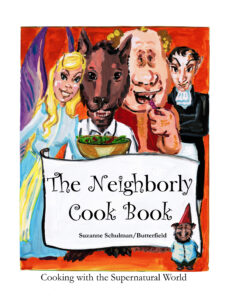
From: The Neighborly CookbookCooking with the Supernatural World |
|||||||||||||||||||||||||||||||||||||||||||
Greek Salad
|
Authored by Suzanne Schulman/ButterfieldISBN/EAN13: 1495436284 / 9781495436284 Get it at Amazon Great for a Hanukkah gift.The Neighborly Cookbook, Cooking with the Supernatural World combines a real life useful cookbook with excellent recipes and tips while juxtaposed fantasy characters, the supernatural world and your Fairy godmother. Trolls, Halflings, Elves, Mermaids, Centaurs and Fairies: a real blast! Suzanne exceeds herself in creating a compilation of world wide favorite recipes to choose from much enjoyed by her family and friends alongside superb paintings and ink drawings. |
||||||||||||||||||||||||||||||||||||||||||
Vegan Tofu Feta Cheese
This vegan tofu feta cheese has almost no fat and is cholesterol-free. I love to use it in salads. It’s fresh and really easy to make. Ingredients
|
Instructions
If the cheese is not salty enough for you, feel free to add some salt to taste. |
||||||||||||||||||||||||||||||||||||||||||

Yehudit And The Miracle Of ChanukahBy Prof. Livia Bitton-Jackson- 1 Tevet 5775 – December 22, 2014 http://www.jewishpress.com/sections/jewess-press/impact-women-history/yehudit-and-the-miracle-of-chanukah/2014/12/22/
Do you know why women are obligated to participate in kindling the Chanukah lights while they are freed from all other time-bound mitzvot? In the words of the Kitzur Shulchan Aruch, its because “the miracle of Chanukah was accomplished by a woman.”
Who was that woman and what is her place in Jewish history?
According to one version, Yehudit was the daughter of Yochanan Kohen Gadol, and a young, virtuous widow of great beauty and wisdom. She lived alone in Bet-Aliah on the northern tip of the Hills of Shomron. The Greco-Syrian forces led by Antiochus’ general, Holofernes, in their victorious sweep towards Yerushalayim, found Bet-Aliah to be an obstacle to their ferocious advance. They decided to place the town under siege and cut off the town’s water supply.
Under the deleterious impact of a severe water shortage the town elders resolved to surrender to the enemy. Yehudit approached them and asked that they hold off for one more day.
Later that evening, dressed in her finery, Yehudit approached the enemy camp and asked to see the general. Holofernes was so bedazzled by her beauty that he honored her with an invitation to a feast in his tent.
According to the Midrash, during the banquet Yehudit served him and his attendants salted cheese which caused them to be excessively thirsty. They promptly made use of the heavily intoxicating beverages she offered them. Having succeeded in luring Holofernes and his attendants into a drunken stupor, Yehudit assassinated her people’s enemy. She approached Holofernes and, with a sword concealed under her robe, severed his head. Then she departed swiftly from the camp, carrying the severed head of Israel’s archenemy back to her own people.
On the ramparts of Bet-Aliah, Yehudit and her trophy were greeted with great jubilance.
The following dawn when Holofernes’ forces beheld the severed head of their general triumphantly displayed above the gate of the Jewish city, they fled in panic. Bet-Aliah, the Shomron and the Judean approaches to Yerushalayim were safe, and Yehudit, whose extraordinary wisdom and sheer courage accomplished this, entered the pages of not only Jewish history but world literature and art as a role model in heroism.
There is a custom widespread among Jewish communities the world over to eat dairy dishes on Chanukah to commemorate Yehudit’s act of feeding cheese to the enemy and thereby reminding us of her incredible daring and self-sacrifice. |
|||||||||||||||||||||||||||||||||||||||||||
And now something for an American Hanukkah.Cookbook:Deep Fried Mars BarA deep-fried Mars bar is an ordinary Mars bar normally fried in a type of batter commonly used for deep-frying fish, sausages, and other battered products. The chocolate bar is typically chilled before battering to prevent it from melting into the frying fat, though a cold Mars bar can fracture when heated. The dish originated at chip shops in Scotland as a novelty item, but was never mainstream. Since various mass media have reported on the practice since the mid-1990s, in part as a commentary on urban Scotland’s notoriously unhealthy diet,[1] the popularity of the dish has spread. The product has not received support from Mars, Inc who said “deep-frying one of our products would go against our commitment to promoting healthy, active lifestyles.”[2] This recipe for the deep fried Mars bar illustrates a typical procedure. The ingredients in the dish’s variations may vary indefinitely, but the procedure will remain more or less the same. For authentic flavor, fry the treat in beef drippings rather than vegetable oil (it is worth noting the high saturated fat content this method of cooking involves). |
|||||||||||||||||||||||||||||||||||||||||||
Ingredients1 UK or Canadian Mars Bar or 1 US Milky Way Bar ProcedureChill, but do not freeze, the Mars bar by leaving it in a fridge, or freezer, for a short while. |
|||||||||||||||||||||||||||||||||||||||||||
If you want a real Hanukkah come home to your Homeland, Israel and see what Hanukkah is really about. Nefesh B’Nefesh: Live the Dream US & CAN 1-866-4-ALIYAH | UK 020-8150-6690 or 0800-085-2105 | Israel 02-659-5800 https://www.nbn.org.il/ info@nbn.org.il It’s time to come home! Nefesh B’Nefesh: Live the Dream 1-866-4-ALIYAH |
|||||||||||||||||||||||||||||||||||||||||||
Strawberry Mango Sufganiyothttp://www.leahcookskosher.com/show_recipe.php?id_recipe=21 *I’m adding this comment on November 25, 2013 – I decided to shoot a ‘how-to’ video for this recipe. Apparently, I’ve simplified things a bit over the years and put the dough together as I do my challah and yeasted sweet dough. Dry ingredients in the bowl and then add the liquids. Since I make these without dairy, I don’t heat the soy milk on the stove thinking soy milk probably doesn’t need to be scalded. (NOTE: in the video, I say “milk” and I should have said “soy milk”) So, I melt the margarine in the microwave, add the soy milk to cool it to an appropriate temperature (125′ for rapid dry yeast) and just mix it into the dry ingredients. Watch the video and you’ll see what I mean!) Sufganiyot are the coveted sweet for Chanukah. We never made them commercially at the bakery as I feared how many sufganiyot would be ordered….and, feared my staff’s reaction if I asked them to make thousands. Another reason we didn’t make them is that I’m a purest. I love these fresh out of the oil. I usually have my fill eating the duds; the blobs of dough dropped into the oil to test the temperature. As with many things I make, my pleasure is in watching others eat something I know they can’t get anywhere else. Program director and students at Cafe Levine, Hillel UW. In my recipe steps, I’ve inserted many pictures to demystify the process; don’t be frightened! Ultimately, these are easy to make. Have the kids help knead and roll the dough, and cut them out. You do the frying. Offer an assortment of fillings; I’ve used a gourmet jam here. But, a chocolate hazelnut spread or whipped marshmallow filling sound great to me! That is a perfect Chanukah party.
Steps:
|
|||||||||||||||||||||||||||||||||||||||||||
 Nefesh B’Nefesh: Live the Dream US & CAN 1-866-4-ALIYAH | UK 020-8150-6690 or 0800-085-2105 | Israel 02-659-5800 https://www.nbn.org.il/ info@nbn.org.il It’s time to come home! Nefesh B’Nefesh: Live the Dream 1-866-4-ALIYAH UK 0800 075 7200 Come home to the Land of Emuna |
|||||||||||||||||||||||||||||||||||||||||||
Sephardic Hanukkah foodsby Katherine Martinelli Dec 11, 2012 http://www.sheknows.com/food-and-recipes/articles/978717/sephardic-hanukkah-food-recipes Beyond latkes In the U.S., Ashkenazic Jewish foods (like gefilte fish, matzo ball soup and latkes) are the most well known. This Hanukkah, look to Sephardic Jewish traditions to revitalize your holiday menu. Sephardic foods differ greatly from their Ashkenazic cousins, reflecting their Mediterranean heritage. For Hanukkah, Sephardic Jews also celebrate with menorahs and fried foods, but the recipes differ. Here are a few favorites to inspire you this Hanukkah. Sephardic keftes de prasas (leek patties) recipeKeftes de prasasWhereas kofte, popular in Turkey and the Middle East, are meatballs, Sephardic keftes (also known as keftikes) are more like patties and very often do not contain meat. Keftes de prasas, or leek patties, are one of the most popular varieties and are eaten at Rosh Hashanah, Hanukkah and Passover (for Passover substitute matzo meal for the breadcrumbs). Recipe below. Serves 6 Ingredients:
Directions:
|
|||||||||||||||||||||||||||||||||||||||||||
Exotic Hanukkah FoodsTry something a little different – and very yummy! by Carol Ungar http://www.aish.com/h/c/r/Exotic-Hanukkah-Foods.html Sephardic Latkes or SvingeSvinge is the Sephardic answer to latkes, light and crunchy eaten sprinkled with confectioners’ sugar. Rabbi Maimon the son of Yosef, the father of the Rambam (Maimonides) says that eating svinge is integral to the Hanukkah celebration. For a small batch – enough for six people combine
Mix these into a batter. Let the batter sit for three hours until it has doubled or tripled in size. Then heat oil in a frying pan – this is another deep fry dish. Wet your hands. Tear off plum-sized pieces of the dough. Stretch them a bit and form a hole in the middle and fry on both sides. Drain on paper towels, Sprinkle with confectioners’ sugar and eat right away. Fried Fish BallsFried foods to recall the miracle of the flask of oil and fish is a traditional Shabbat food – so it’s a perfect Shabbat Hanukkah dish. In the UK, these fish balls are featured at all Jewish celebrations and for good reason – they are absolutely delicious and easy to make. Defrost one roll of gefilte fish. Add matzah meal one handful at a time, just enough to form the fish into walnut-sized balls. Deep fry about six minutes until browned on all sides. (optional: add 1/4 t black pepper to the fish mix for a spicier fish ball) Eat hot or cold. Yum! Kuku SabziThis is a Persian frittata traditionally eaten on Hanukkah. Very healthy and very yummy.
Chop all the vegies fine. Lightly grease a ceramic nonstick frying pan (2 tablespoons of vegetable oil or ghee). Lightly beat the eggs. Add spices, salt, pepper, turmeric to taste. Chop the herbs and onions or scallions are finely as you can – use fresh or frozen, never dried. You can also substitute fresh spinach leaves for the herbs. Combine the herbs with eggs. Pour the mixture into a heated greased frying pan. Fry until lightly browned, then flip over. Cut the kuku into wedges and served with yogurt and rice or crusty bread and feta cheese too. Serves three. You can freeze this! LasagnaWe eat dairy foods on Hanukkah to remember the bravery of Judith, the valiant Maccabee woman who slew the wicked Syrian Greek general Holofernes by first feeding him cheese to stimulate thirst and then wine to get him drunk. After that she beheaded him. The sight of his skull rolling through his tent frightened the Syrian Greeks so much that they ran away and the Maccabees won the war. I love this recipe. You don’t precook the noodles or the sauce. You just layer everything and it all bakes together until a tinfoil blanket. Easy and delicious.
Thin the sauce with a little bit of water. Don’t cook this, just mix ingredients in a separate bowl. Combine 16 oz or 750 grams of cottage cheese, ricotta cheese or white cheese (or any combination of the three – three Israeli cottage cheese packages are okay) with one egg. Layer sauce, noodles, cottage cheese, two big handfuls of grated cheese (I use low fat mozzarella). REPEAT. Last layer is noodles and sauce. Bake in a 9×12 inch pan covered well with tin foil for one hour at medium heat (350F or 180C). For the last 10 minutes of baking, uncover and add two handfuls of grated cheese to the top so the cheese can melt and look pretty. LatkesHere’s a cooking lesson cast in rhyme Latkes are a part of our history Of how to make them crisp and light Rule #1 – don’t skimp on oil Rule #2 – make your latkes of equal dimension Rule #3 – when they’re brown then flip Rule #4 – eat right away Rule #5 – don’t forget to smile My Latkes Recipe Using the grating attachment on your food processor, grate together
Heat oil in a heavy bottomed skillet. Make sure the entire skillet is covered with oil 1/4 inch or more deep. Drop in a tiny bit of batter. If it browns then you’re ready to fry. Spoon in latkes. Don’t crowd. Fry three minutes on each side. Remove, place on paper towel to drain excess oil and serve ASAP!! You can reheat in a low oven and serve later ,or if you really have to freeze, but nothing tastes as good as fresh. Safety note: turn frying pan handles inward and never leave a frying pan full of hot oil alone even for a minute. Also don’t let the oil smoke because that will spoil your latkes. BimuelosProbably the most traditional Sephardic Hanukkah food, bimuelos are fried dough puffs. As Claudia Roden writes in The Book of Jewish Food, “Bimuelos is the Judeo-Spanish name for the little flour-and-yeast fritters. In Egypt, where they were sold on the street, they were called ‘zalabia,’ and in Iraq, Persia and India they were ‘zengoula.’ All over the Middle East they were eaten at Hanukkah.” Whatever you want to call them, these sweet dumplings will steal the show at any meal. DoughnutsDough:
For frying: For dusting: OR For syrup:
Directions 1. Sift together the flour and baking powder and set aside. 2. Put the water, butter, sugar and salt (and orange zest, if using) into a saucepan and bring it to a boil. Add all the flour at once and stir vigorously with a wooden spoon, just until the ingredients are blended and the dough pulls away from the sides of the pot, then STOP! Set the pot aside for two minutes. 3. Pour oil to a depth of three inches into a heavy gauge saucepan. Heat the oil to 375°F. Unless you have a deep fryer, I strongly advise using a candy thermometer to monitor the oil temperature, which will fluctuate rapidly and wildly as you cook. Too hot and the oil will burn, burning the bimuelos with it. Too cold – anything lower than 350°F – and they won’t expand properly or cook thoroughly inside without overbrowning. 4. Add the eggs to the still-warm dough one at a time, blending each in thoroughly with a wooden spoon before adding the next. The dough will be very shiny and sticky, but there should be no runny egg left. 5. Dip two soupspoons into the hot oil. Scoop up a tablespoon of dough with one, use the other to nudge the dough into a globe shape, and slip it into the hot oil. Cook no more bimuelos at one time than can float freely without crowding, in a single layer in the oil. At first they’ll sink like a stone, then float up to the surface. Leave them to cook on one side, until medium golden. When they’re cooked on one side, bimuelos usually roll over by themselves, but might not if the pot is crowded. If they don’t, coax them with tongs, and finish browning on the other side. 6. Remove them with tongs as they are done. They will not need draining on paper. If you’re not filling them, roll immediately in a bowl of sugar, or sugar and cinnamon. If you’re going to fill them, set them aside to cool slightly, then gently prod open like a clamshell, spoon in the filling and shut them again. 7. To make the syrup, bring the water to a boil, add the sugar, and reduce until slightly thick but still runny. Blend in the honey off the stove, if using, without letting it boil. Serve the bimuelos soaked in syrup, or pour the syrup in small bowls for dipping. Fried ZucchiniRecipe created by SheKnows on May 30, 2011 Prep: 10 min A tasty parmesan breaded zucchini patty side dish.
Directions Combine the ingredients in a bowl and season with the salt and pepper. PrecipiziIn addition to pollo fritto, Italian Jews also celebrate Hanukkah with precipizi. These lightly sweetened dough balls are fried and dipped in honey that hardens to create a satisfying and sticky exterior. Get the recipe below! Makes 20-24 dough balls
Instructions: In a large mixing bowl, combine the eggs, flour, sugar, olive oil and rum. Knead until you get a smooth, soft dough. |
|||||||||||||||||||||||||||||||||||||||||||
Cheese BourekasRecipe by: GCBENEZRA
Add all ingredients to list |
|||||||||||||||||||||||||||||||||||||||||||
From the OU
Fried Macaroni & CheeseAndrea Reynaldo | Dairy https://oukosher.org/recipes/fried-macaroni-cheese-dairy/ A totally over the top recipe but my friend swears it’s amazing
InstructionsGrease a 9×13-inch pan. |
|||||||||||||||||||||||||||||||||||||||||||
Hanukkah – In Those Days, at This Time. |
|||||||||||||||||||||||||||||||||||||||||||
‘You All Come from Israel,’ Netanyahu Tells Olim |
|||||||||||||||||||||||||||||||||||||||||||
Nefesh B’Nefesh | A Family Makes Aliyah | NBN |
|||||||||||||||||||||||||||||||||||||||||||
IMTI (Im Tirtzu) Who We Are |
|||||||||||||||||||||||||||||||||||||||||||
The Modern-Day Miracle of Hanukkah |
|||||||||||||||||||||||||||||||||||||||||||

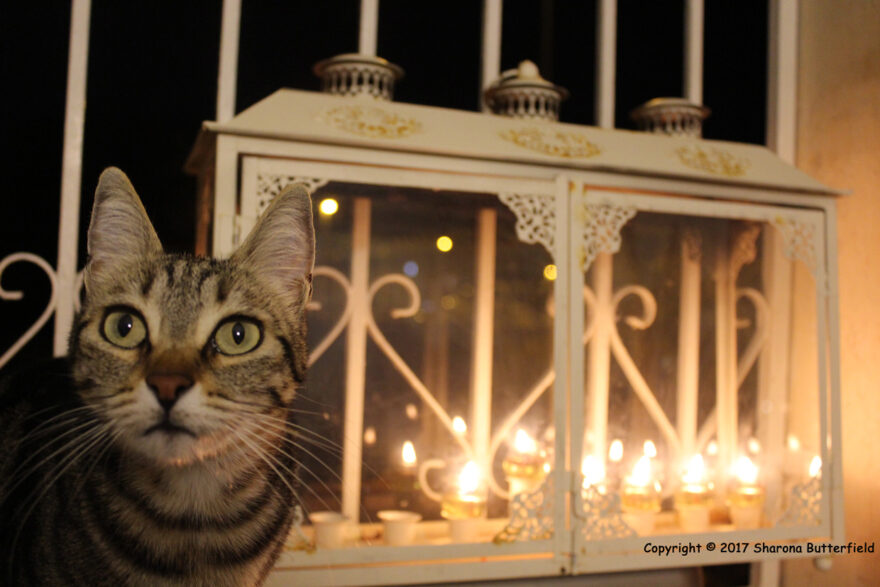
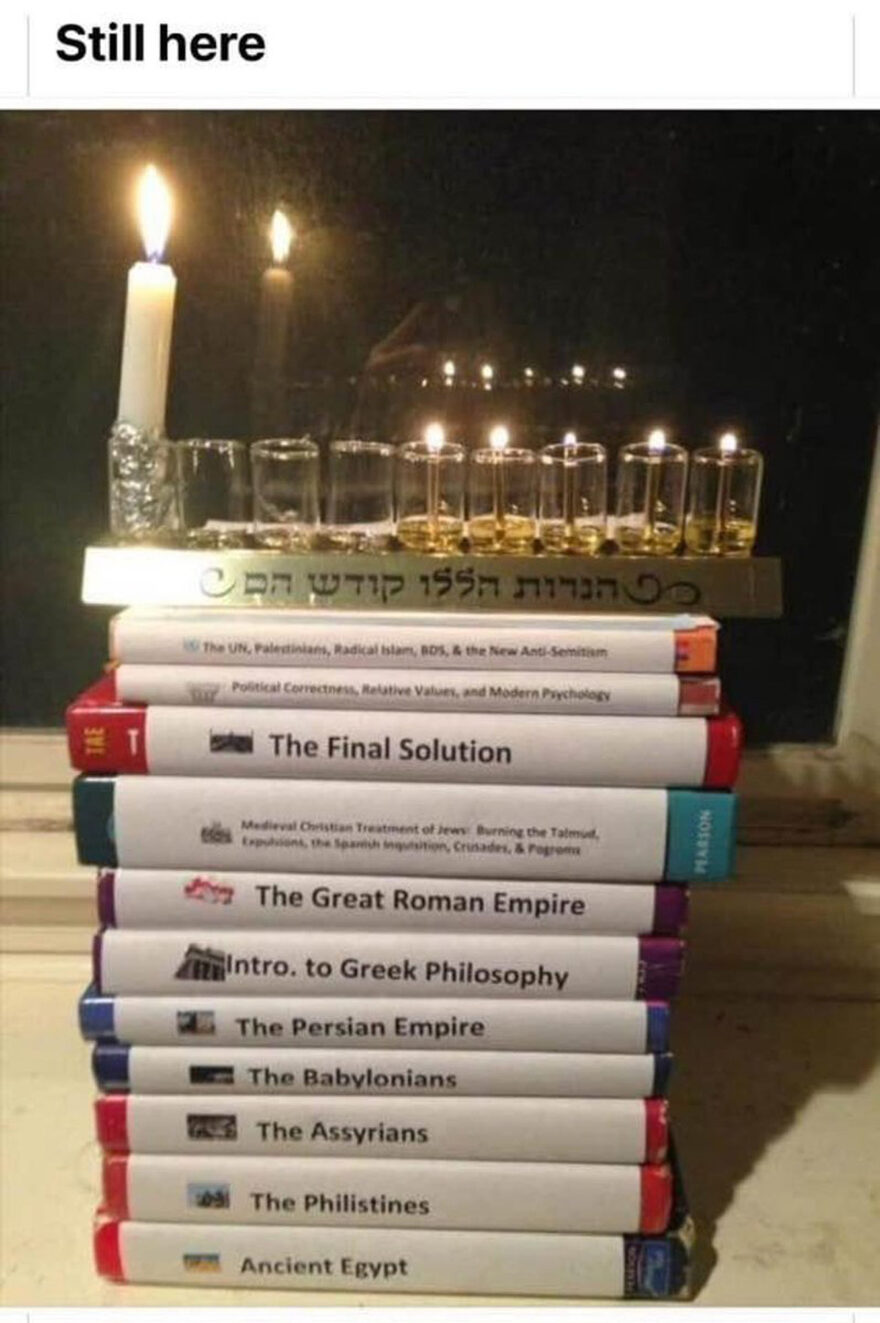
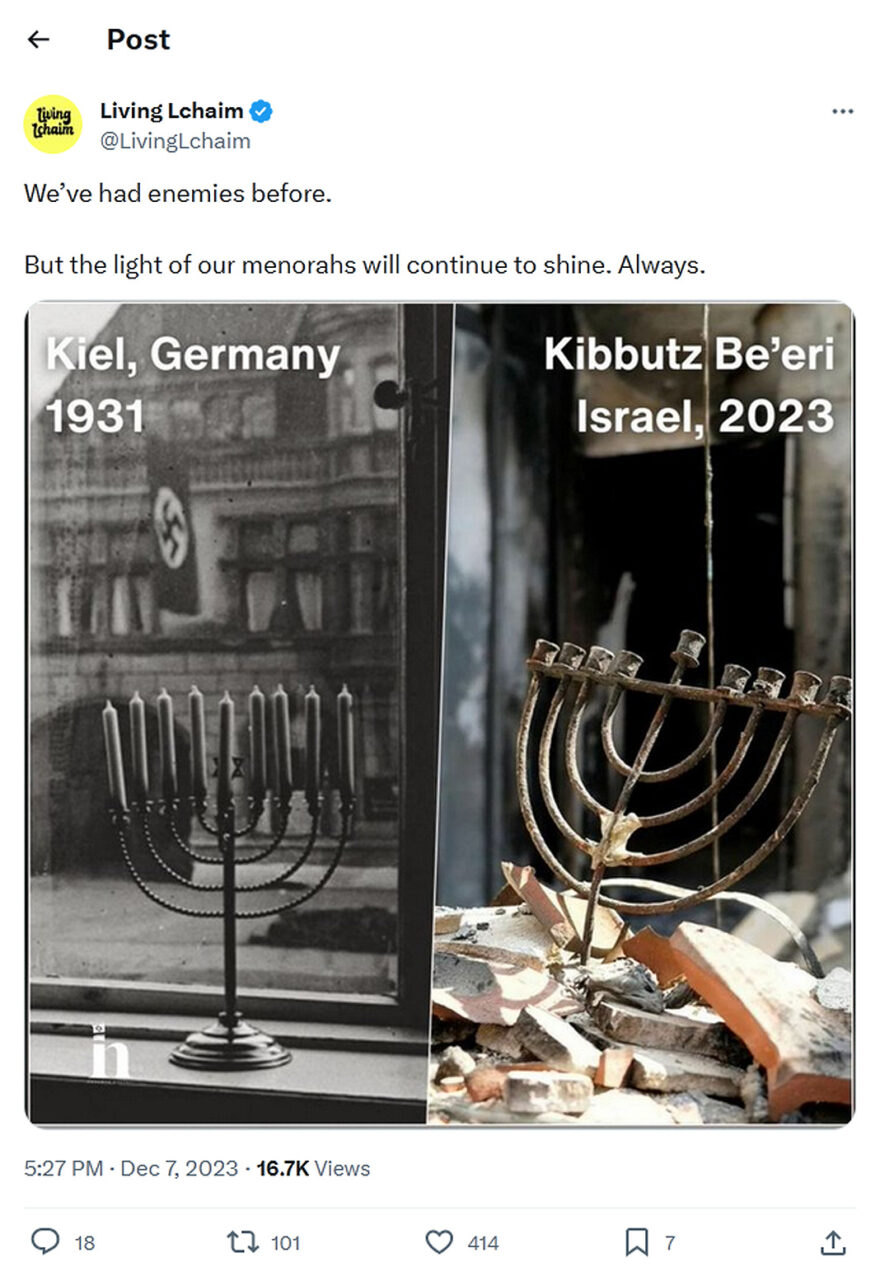
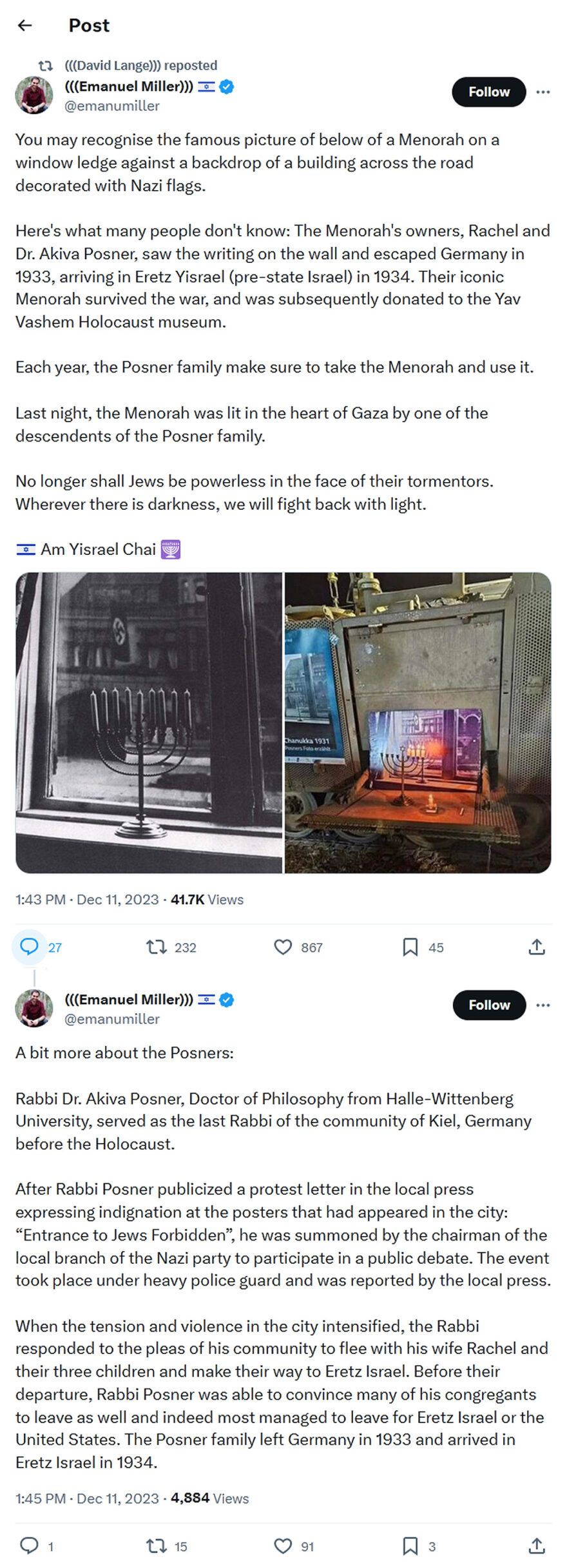
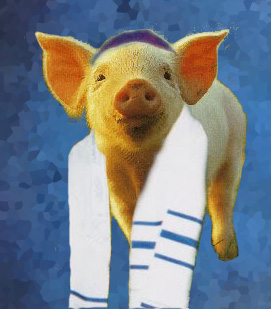


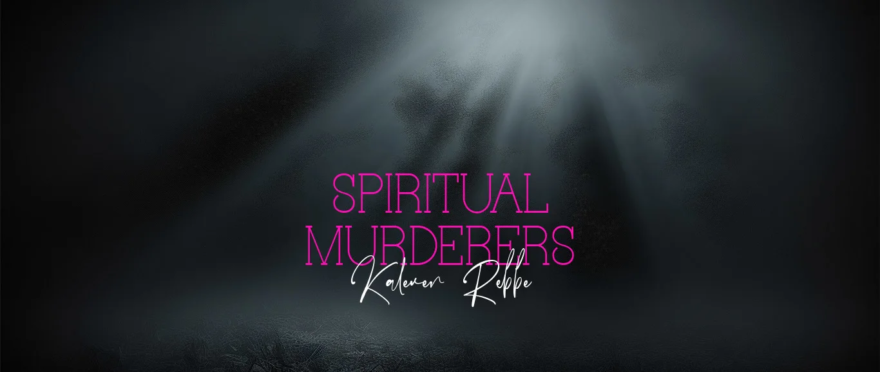

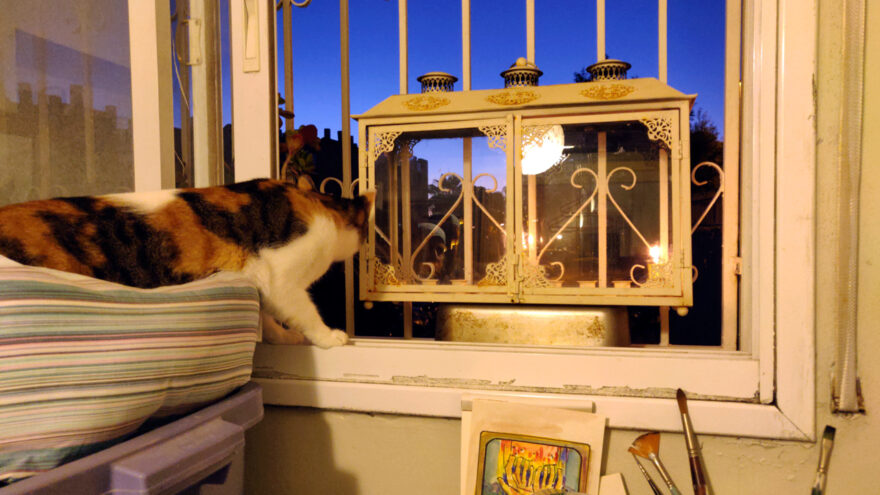
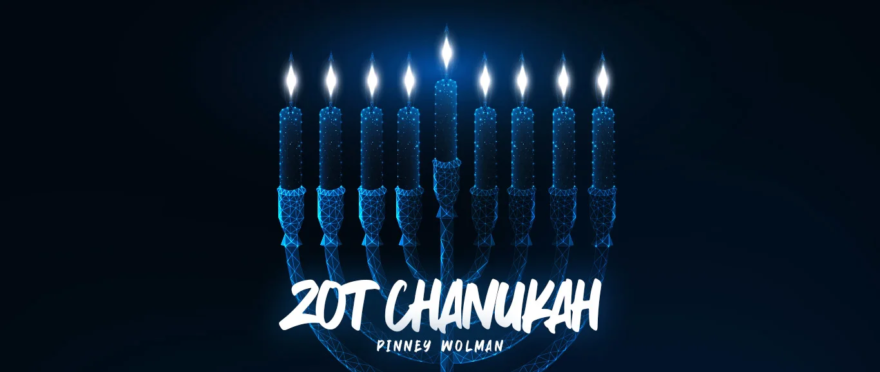
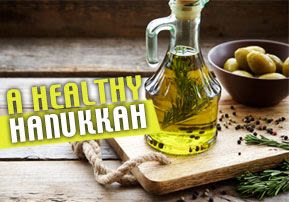
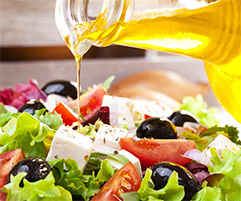



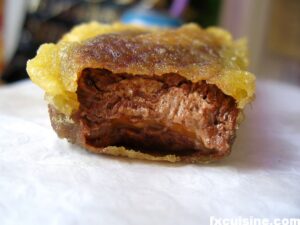
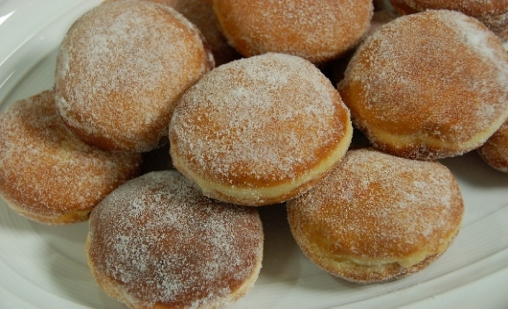
 . It is the bible of cookbooks in my family. My mother, four sisters, BFF (Best Friends Forever), daughter and niece all have this book. Vintage early 1960’s is the best. I have multiple copies; each successive find at Goodwill as thrilling as I imagine winning the lottery would be. Of course, sufganiyot are “Jelly Filled Donuts” or even “Bismarks” in the index.
. It is the bible of cookbooks in my family. My mother, four sisters, BFF (Best Friends Forever), daughter and niece all have this book. Vintage early 1960’s is the best. I have multiple copies; each successive find at Goodwill as thrilling as I imagine winning the lottery would be. Of course, sufganiyot are “Jelly Filled Donuts” or even “Bismarks” in the index.  by Gil Marks has a similar recipe with good tips. This is another must have cookbook I frequently reference.
by Gil Marks has a similar recipe with good tips. This is another must have cookbook I frequently reference.